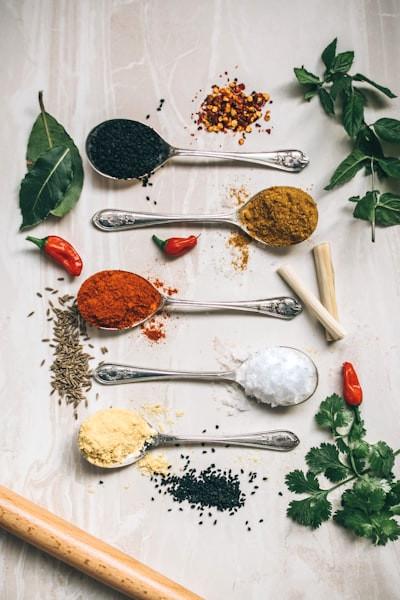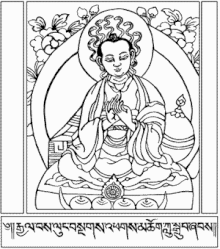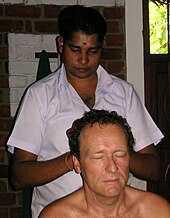Explore the World's Best Ideas
Join today and uncover 100+ curated journeys from 50+ topics. Unlock access to our mobile app with extensive features.
The ayurveda of India.
All information about ayurveda is given below. Ayurveda is very intresting. If we know about that we can think that it is like a magic.
3
65 reads
Ayurveda (/ˌ ɑː j ʊər ˈ v eɪ d ə , -ˈ v iː -/ )[1] is an alternative medicine system with historical roots in the Indian subcontinent.[2] The theory and practice of Ayurveda is pseudoscientific .[3] [4] [5] The Indian Medical Association labels Ayurvedic practitioners who claim to practice medicine as quacks .[6] Ayurveda is heavily practiced in India and Nepal, where around 80% of the population report using it.[7] [8] [9] [10]
3
9 reads
Ayurveda therapies have varied and evolved over more than two millennia.[2] Therapies include medicines, special diets, meditation, yoga, massage, laxatives, enemas, and medical oils.[11] [12] Medicines are typically based on complex herbal compounds, minerals, and metal substances (perhaps under the influence of early Indian alchemy or rasa shastra ). Ancient Ayurveda texts also taught surgical techniques, including rhinoplasty , kidney stone extractions , sutures, and the extraction of foreign objects.[13] [14]
3
11 reads
The main classical Ayurveda texts begin with accounts of the transmission of medical knowledge from the gods to sages, and then to human physicians. In Sushruta Samhita (Sushruta's Compendium ), Sushruta wrote that Dhanvantari , Hindu god of Ayurveda, incarnated himself as a king of Varanasi and taught medicine to a group of physicians, including Sushruta.Ayurveda has been adapted for Western consumption, notably by Baba Hari Dass in the 1970s and Maharishi Ayurveda in the 1980s. Some scholars assert that Ayurveda originated in prehistoric times,
3
9 reads
and that some of the concepts of Ayurveda have existed from the time of the Indus Valley Civilization or even earlier.[20] Ayurveda developed significantly during the Vedic period and later some of the non-Vedic systems such as Buddhism and Jainism also developed medical concepts and practices that appear in the classical Ayurveda texts.[20]
3
7 reads
In Ayurveda texts, Doṣa balance is emphasized, and suppressing natural urges is considered unhealthy and claimed to lead to illness.[21] Ayurveda treatises describe three elemental doṣas viz. vāta , pitta a nd kapha , and state that balance (Skt. sāmyatva ) of the doṣas results in health, while imbalance (viṣamatva ) results in disease. Ayurveda treatises divide medicine into eight canonical components. Ayurveda practitioners had developed various medicinal preparations and surgical procedures from at least the beginning of the common era .[22]
3
5 reads
There is no good evidence that Ayurveda is effective for treating any disease.[23] Ayurvedic preparations have been found to contain lead , mercury , and arsenic ,[24] substances known to be harmful to humans . In a 2008 study, close to 21% of U.S. and Indian-manufactured patent Ayurvedic medicines sold through the Internet were found to contain toxic levels of heavy metals , specifically lead , mercury , and arsenic .[25] The public health implications of such metallic contaminants in India are unknown.[25]
3
5 reads
The earliest classical Sanskrit works on Ayurveda describe medicine as being divided into eight components (Skt. aṅga ).[26] [27] This characterization of the physicians' art, "the medicine that has eight components" (Skt. cikitsāyām aṣṭāṅgāyāṃ चिकित्सायामष्टाङ्गायाम्), is first found in the Sanskrit epic the Mahābhārata , c. 4th century BCE.[28] The components are:[29] [30] [31]
3
4 reads
- Kāyachikitsā : general medicine, medicine of the body
- Kaumāra-bhṛtya (Pediatrics): Discussions about prenatal and postnatal care of baby and mother, methods of conception; choosing the child's gender, intelligence, and constitution; and childhood diseases and midwifery.[32]
- Śalyatantra : surgical techniques and the extraction of foreign objects
- Śhālākyatantra: treatment of ailments affecting ears, eyes, nose, mouth, etc. ("ENT")
- Bhūtavidyā : pacification of possessing spirits, and the people whose minds are affected by such possession
- Agadatantra /Vishagara-vairodh Tantra (Toxicology): It
3
3 reads
- includes subjects about epidemics, toxins in animals, vegetables and minerals. It as well contain keys for recognizing those anomalies and their antidotes.
- Rasāyantantra : rejuvenation and tonics for increasing lifespan, intellect and strength
- Vājīkaraṇatantra : aphrodisiacs and treatments for increasing the volume and viability of semen and sexual pleasure. It also deals with infertility problems (for those hoping to conceive) and spiritual development (transmutation of sexual energy into spiritual energy).
3
2 reads
Principles and terminology
The word "ayurveda" is Sanskrit : आयुर्वेद , Āyurveda , meaning knowledge of life and longevity.[30]
The central theoretical ideas of Ayurveda developed in the mid-first millennium BCE, and show parallels with Sāṅkhya and Vaiśeṣika philosophies, as well as with Buddhism and Jainism .[34] [35] Balance is emphasized, and suppressing natural urges is considered unhealthy and claimed to lead to illness.[21] For example, to suppress sneezing is said to potentially give rise to shoulder pain.[36]
3
1 read
Practice
Ayurvedic practitioners regard physical existence, mental existence, and personality as their own unique units, with each element being able to influence the others.[clarification needed ] This is a holistic approach used during diagnosis and therapy, and is a fundamental aspect of Ayurveda. Another part of Ayurvedic treatment says that there are channels (srotas ) which transport fluids, and that the channels can be opened up by massage treatment using oils and Swedana (fomentation). Unhealthy, or blocked, channels are thought to cause disease.[53]
3
2 reads
Diagnosis
Ayurveda has eight ways to diagnose illness, called Nadi (pulse), Mootra (urine), Mala (stool), Jihva (tongue), Shabda (speech), Sparsha (touch), Druk (vision), and Aakruti (appearance).[54] Ayurvedic practitioners approach diagnosis by using the five senses.[55] For example, hearing is used to observe the condition of breathing and speech.[39] The study of the lethal points or marman marma is of special importance.[40]
3
3 reads
Treatment and prevention
Two of the eight branches of classical Ayurveda deal with surgery but contemporary Ayurveda tends to stress attaining vitality by building a healthy metabolic system and maintaining good digestion and excretion .Ayurveda also focuses on exercise, yoga , and meditation .One type of prescription is a Sattvic diet .
Ayurveda follows the concept of Dinacharya , which says that natural cycles (waking) are important for health. Hygiene, including regular bathing, cleaning of teeth, oil pulling , tongue scraping , skin care, and eye washing, is also a central practice.[39]
3
1 read
Substances used
Plant-based treatments in Ayurveda may be derived from roots, leaves, fruits, bark, or seeds such as cardamom and cinnamon . In the 19th century, William Dymock and co-authors summarized hundreds of plant-derived medicines along with the uses, microscopic structure, chemical composition, toxicology, prevalent myths and stories, and relation to commerce in British India . Animal products used in Ayurveda include milk, bones, and gallstones . In addition, fats are prescribed both for consumption and for external use.
3
1 read
For more information for ayurveda.
Click on About ayurveda
We think that you should read all about ayurveda.
3
5 reads
IDEAS CURATED BY
Be an expert in science and maths by watching our UHD videos on Sci Academy youtube channel. link for the channel https://youtube.com/channel/UCyLvlW7Vl7vgg6se0Gazr-g
Sci Academy 's ideas are part of this journey:
Learn more about history with this collection
Different Easter traditions around the world
The significance of Easter eggs and bunnies in modern culture
The importance of the holiday in the Christian faith
Related collections
Similar ideas
15 ideas
1 idea
Meditation: Overview, Research, and Effectiveness - The Human Condition
thehumancondition.com
23 ideas
21 Contribution of India to world
audiobookmc.blogspot.com
Read & Learn
20x Faster
without
deepstash
with
deepstash
with
deepstash
Personalized microlearning
—
100+ Learning Journeys
—
Access to 200,000+ ideas
—
Access to the mobile app
—
Unlimited idea saving
—
—
Unlimited history
—
—
Unlimited listening to ideas
—
—
Downloading & offline access
—
—
Supercharge your mind with one idea per day
Enter your email and spend 1 minute every day to learn something new.
I agree to receive email updates


